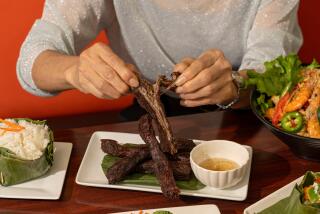Why the Manchus Made That Jerky Soup
The Manchus are all but gone now, fast disappearing as a distinct ethnic group, their language nearly extinct. But from the mid-17th to the early 20th century they ruled the most populous country in the world, China. For hundreds of years the Chinese were required to wear their hair in the Manchu pigtail as a sign of submission to them.
From the vantage point of their forest homeland in Manchuria, north of Korea, the Manchus had watched one nation after another conquer China over the centuries, only to be swallowed up by it in a couple of generations. They took notes and planned (in vain, as it happened) to avoid the same fate once it was their turn to rule.
They particularly studied their neighbors the Mongols--the easternmost tip of Mongolia was right over the Khingan Mountains from Manchuria, and the Mongols had actually conquered them on occasion. The Manchus wrote their own language in the Mongolian alphabet and even borrowed a few Mongol foods, such as a soup called sile and a sort of jerky made from beef and mutton (borcilaha; they cut it up into squares and used it for making soup). They also learned a couple of alcoholic beverages from those hard-drinking bad boys of the steppe: fermented milk (darasu) and the Mongolian-style vodka (arjan) made from it.
And they made kuru, a sort of dried yogurt cheese. Otherwise Manchu cuisine ended up being pretty much like Chinese food.
One more Mongolian word they borrowed was a word for salt (dabsun). Not that they learned how to salt their food from the Mongols; they’d just noticed that one of the revenue sources of the Mongolian Empire had been a salt tax, so the Manchus were careful to set up their own dabsun department.
More to Read
Sign up for Essential California
The most important California stories and recommendations in your inbox every morning.
You may occasionally receive promotional content from the Los Angeles Times.










